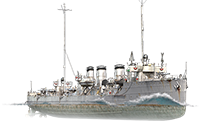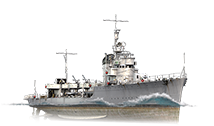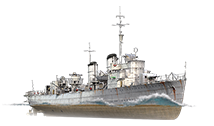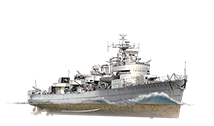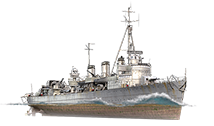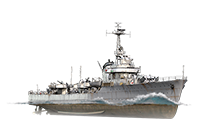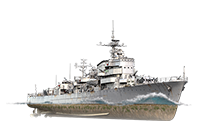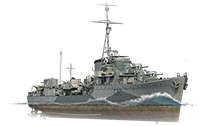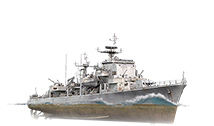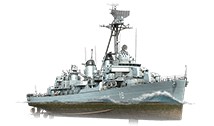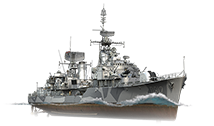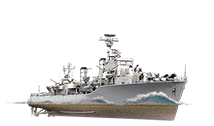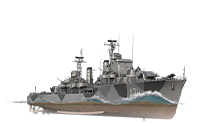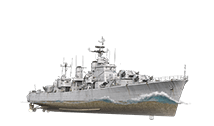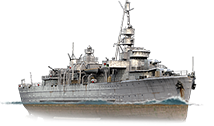Barcos Pa Europeos


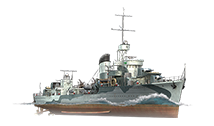
Initially deciding on a strategy of harassment and indirect engagement, Polish naval command realized that the small, mostly landlocked Baltic Sea was well within range of the Kriegsmarine and the Luftwaffe, and that any ship would be quickly found and sent to the bottom if they were to remain there. Thus on 29 August 1939, the Peking Plan was executed with assistance from the Royal Navy, evacuating the destroyers stationed in the Baltic — ORP Burza, ORP Błyskawica and ORP Grom — to the naval base at Leith, Scotland, just 3 days before the invasion of Poland and the outbreak of war. Initially seen as "abandoning" their country, the operation was a wise decision by the Polish naval command, preserving the destroyers to allow them to take part in the defense of Norway, Operation Dynamo, the Battle of the Atlantic, and dozens of escort and convoy missions. Moreover, supplemented by ships from the Royal Navy, the Polish Navy in exile as a whole also participated in major engagements such as the sinking of Bismarck, Operation Jubilee, and Operation Overlord. On the other hand, ORP Gryf and ORP Wicher, who had remained behind in the Baltic Sea, were sunk within the first three days of the war.
Poland's years as a Warsaw Pact country did not diminish her need for a naval presence in the Baltic Sea, and that remained the focus of her navy for a half century following the close of World War II. Joining the North Atlantic Treaty Organization (NATO) on 29 March 1999 forced a change in that mindset; the Polish Navy of the 21st century has re-focused on greater levels of international cooperation and sea-going patrols in cooperation with her new NATO partners, developing a specialization in sub-surface combat.

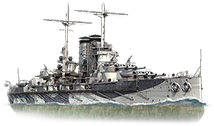
Austria first gained access to the ocean in 1382, yet it would take over one hundred years for armed warships to be flying the Austrian colors starting in very small numbers in 1528. This small group mainly served as coastal defense, and was only under a very local command. It was only in 1797 that Austria truly started to maintain a navy, when Venice became a part of Austria and the Venecian fleet would become the Austrian fleet. This however only lasted for a mere 50 years before the Guerre d'indipendenza italiane, the Italian war for independence, broke out, in which the majority of the crews of Italian origin would turn against the Austrian rule. Having lost almost their entire Naval power, it became clear that Austrian interests on the ocean could only be secured by a proper Austrian Navy. Emperor Franz Joseph drew the consequences and began laying the foundation of a full Austrian Navy. With the inclusion of Hungary in 1867 the navy became the Austro-Hungarian Navy[2]. Despite the everlasting budget issues, the Austro-Hungarian Navy would become one of the larger navies and would follow the latest naval trends, or even set one themselves like with the construction of the first torpedo.
During the first world war the Austro-Hungarian Navy was blocked the access to the Mediterranean Sea by Italian, French and British forces, and would be delegated to a Fleet-In-Being. However the smaller forces would continuously be active in the Mediterranean, in particular submarines[3] which would over the course of the war sink 196,000 GRT with a further 41,000 GRT being possibly sunk. On top of that numerous warships would be crippled and sunk by smaller forces. The only vessel that would see action outside the Mediterranean would be the cruiser[4] Kaiserin Elisabeth, which would otherwise become known as the first target of a ship-launched aircraft.
The end of the Great War in 1918 marked the end of the Austro-Hungarian empire, and as such the end of the Austro-Hungarian Navy. The remaining vessels would become parts of other navies, or in the case of the battleship[5] Viribus Unitis get sunk by Italian divers before they could be redistributed. Austria became a nation in central Europe with no access to the ocean, rendering the need for a large navy impractical.

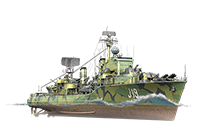
Swedish Royal Navy (Svenska marinen) The Swedish Royal Navy[6] has officially existed since the 7th of June, 1522. Formed in the middle of the Swedish War of Liberation (1521-1523), where Sweden fought for her independence from the Kalmar Union, the Swedish Navy took part in numerous wars in the ensuring centuries. However, Sweden's armed neutrality has lasted from the end of the Swedish-Norwegian war (1814) to the present day, though Swedish forces have become intervened in other conflicts. Swedish ships use the prefix HMS (Hans/Hennes majestäts skepp, or His/Her Majesties' ship), but in English they are normally given the prefix HswMS, to avoid confusion with the Royal Navy.
Sweden's navy was the main enforcer of her neutral policies during both World Wars. While Sweden has never fielded a 'true' battleship, she has kept seaworthy coastal defense battleships since 1886. Indigenous shipbuilders built these coastal defense battleships, cruisers, and destroyers, which were in service from before the first World War until the decommissioning of the Halland in 1987. Sweden's coastal defense battleships have been cited as a reason Germany did not invade Sweden like her Scandinavian neighbors, but how much impact these ships had compared to the military, industrial, and political concessions to the Reich is debatable.
As the Cold War began, it was thought that large Swedish Navy ships would not survive any sort of nuclear attacks in the enclosed Baltic. Thus, construction of ships larger than frigates was stopped, with many larger ships being sold to South American nations or scrapped outright. Destroyer Småland survives as a museum ship in Gothenburg.
Greece's naval history goes back to ancient times with various Greek city-states having their own navies. Notably, they came together during the Persian Wars at the Battle of Salamis in 480 BC. The Greek states were later conquered by various empires throughout history, and thus no Greek naval forces existed, though seafaring traditions continued. In 1821, the Greek people revolted against the Ottoman Empire and demanded independence.
The modern Hellenic Navy (Ελληνικό Πολεμικό Ναυτικό) was born in 1821 during the Greek War of Independence, using converted merchant ships as the base for the navy. During the war, the young Hellenic Navy saw some surprise victories against the Ottoman Navy. As international support for Greek independence grew, the leading world powers intervened and helped Greece secure their independence by 1827. The Hellenic Navy was small in size, but received some warships from foreign powers to help it build up. The ascension of King Otto and the creation of the Kingdom of Greece in 1832 saw the formal creation of the Royal Hellenic Navy and underwent further expansion, opening the first naval schools. During the Crimean War, Greece was blockaded by the Royal Navy to prevent it from attacking the Ottoman Empire and aiding Russia. In 1855, the first steam-powered warships arrived. In 1866, the Greek island of Crete revolted against Ottoman rule, but the Royal Hellenic Navy was in no position to support it, and thus the revolt failed. This made the Greek government realize the importance maintaining a navy. The Royal Hellenic Navy underwent a modernization and new ironclad warships were built. In 1889, Greece saw its first battleships come into service. The Greco-Turkish War of 1897 saw no naval action, but the Royal Hellenic Navy dominated the Aegean Sea, though Greece was defeated on land. In 1909, the Royal Hellenic Navy's most famous warship, the armored cruiser, RHS Georgios Averof was commissioned, and more modern warships also came into service alongside her.
In 1912 the First Balkan War broke out with Greece leading a coalition against the Ottoman Empire. During the war, Greece's most famous admiral, Pavlos Kountouriotis, commanded the Royal Hellenic Navy from the Georgios Averof. He led the Greek fleet to decisive victories at the Battle of Elli in December 1912 and at the Battle of Lemnos in January 1913. These battles secured Greece's victory in the war. Immediately after the war, the Royal Hellenic Navy sought to expand its fleet and purchased two pre-dreadnought battleships from the United States, and an unfinished protected cruiser from China. Greece also put in orders to foreign shipyards for more modern destroyers, light cruisers, and dreadnought battleships, to counter a similar build-up by the Ottoman Empire. However, the outbreak of World War I in 1914 prevented most of these orders from being delivered, and halted Greece's naval expansion. Greece attempted to remain neutral during World War I, but this led to an internal political conflict, and the French Navy confiscating and disarming the Greek fleet in Athens. Greece eventually entered the war on the Entente side in July 1917 and France returned the Greek ships, but too late to see any real action in the war. The Greek fleet deployed to support the Allied Intervention in Russia and the Greco-Turkish War of 1919, in which Turkey defeated Greece on land.
In the interwar years, Greece undertook a naval modernization with assistance of foreign powers. In August 1940, Italy invaded Greece, dragging them into World War II. Greece fell to the Axis powers by April 1941, and the Royal Hellenic Navy suffered heavy losses, including both of their battleships. The Luftwaffe was responsible for the destruction of most of the Greek fleet. What survived of the Royal Hellenic Navy continued to operate alongside the Royal Navy for the rest of the war, and saw it resupplied with ships transferred from the Royal Navy to help recover its losses. The armored cruiser Georgios Averof had escaped and served as the Greek flagship during the war. She would be used as the Suez Canal guardship. The rest of the fleet took part in convoy escort missions in the Mediterranean Sea and some ships took part in the D-Day landings.
After the war, the Royal Hellenic Navy imported a number of foreign ships, mostly from the United States, to rebuild its fleet. Greece joined NATO in 1952 and it only helped further expand their navy and their operations. In 1967, Greek military leaders ousted a democratic government in a coup d'etat and declared a military dictatorship. Greece's King Constantine II attempted a counter coup, but failed and was forced into exile. The Greek monarchy was later abolished in 1973, and the Hellenic Republic was declared, and the navy becoming the Hellenic Navy. That same year, the Greek destroyer, HS Velos refused to sail home from Italy in protest of the dictatorship, gaining international attention. The Greek junta fell in 1974 and democracy was restored. The Hellenic Navy was deployed that year to Cyprus to reinforce their garrison and the Cyprus Army against the Turkish invasion, though no major naval action occurred between either side.
Today the Hellenic Navy remains a major force in Southern Europe and operates a large modern fleet of frigates, fast attack craft, and submarines. It is very capable of controlling the Aegean Sea, the Adriatic Sea, and portions of the Mediterranean Sea. It participates actively in NATO operations alongside fellow allies.Destroyers
Cruisers
Battleships
Notes
European Destroyers: Branch Review - Apr 8, 2020 - News - World of Warships
European Destroyers. How to? - Apr 9, 2020 - World of Warships Official Channel - YouTube
Destroyer Smaland (Maritiman)
- ↑ Polish Navy (Wikipedia) and Ships of the Polish Navy (Wikipedia)
- ↑ Austro-Hungarian Navy (Wikipedia) and Ships of Austria-Hungary (Wikipedia)
- ↑ Austro-Hungarian U-boats (Wikipedia)
- ↑ Cruisers of Austria-Hungary (Wikipedia)
- ↑ Battleships of Austria-Hungary (Wikipedia)
- ↑ Swedish Navy (Wikipedia) and Ships of the Swedish Navy (Navypedia)

